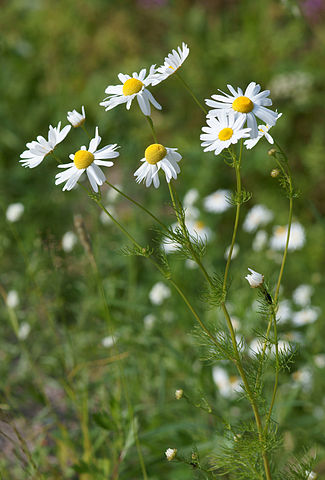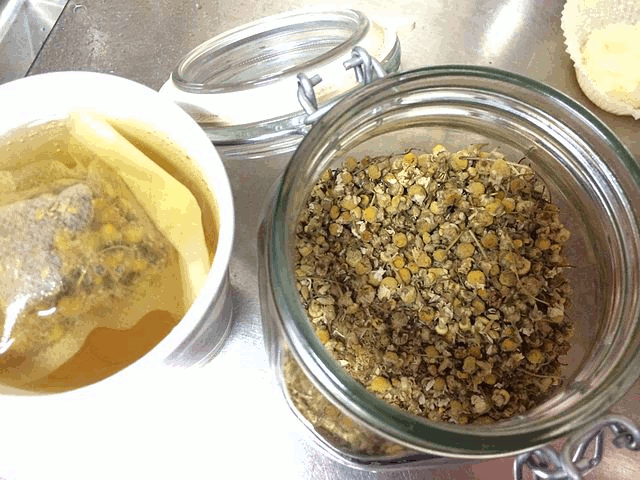Chamomile
 Common Names: Chamomile, camomile, German chamomile
Common Names: Chamomile, camomile, German chamomile
Scientific Name: Matricaria recutita
Climate: Cold, temperate and warm
Plant Description: Chamomile is a herbaceous plant of the daisy family. It is a hardy, low-growing, annual plant with creeping roots. The flowers have a yellow core surrounded by white petals and grow on long stalks that come from the main stems. The green leaves are serrated. The stems root as they creep and it extends to about 15 cm. It can reach heights of up to 70 cm. Chamomile is self-seeding. The plant is frost resistant and short lived in hotter regions.
Cultivation: German chamomile grows best in full sun but can adapt to shaded conditions. It prefers well-drained, sandy soils. It can be grown from seed indoors and needs to be planted about one month before transplanting in the field. The seeds must be kept moist for germination, which takes about two weeks. The success rate of seeds is about 50%. They are best transplanted when all danger of frost has passed. They should be planted at a distance of about 15 cm between plants.
Chamomile requires a moderate amount of water and grows best in soils that are moist but not wet. It should be cut back in early spring to encourage new growth. It does not compete well with other weeds, so it is important to weed the area around the plant.
The flowers are ready to harvest when the petals begin to curl back towards the center. Flowers and stems are cut from the plant. They can be dried and stored in an airtight container. It is important to ensure that there are no insects on the plant before storing. If the flowers have insects, they should be washed with hot water and dried again.
 Uses: Chamomile is an excellent companion plant to have in the field and is said to help the growth of onions, cucumbers, and other herbs. It is also said to improve the flavor of onions and cabbages.
Uses: Chamomile is an excellent companion plant to have in the field and is said to help the growth of onions, cucumbers, and other herbs. It is also said to improve the flavor of onions and cabbages.
They attract beneficial insects and pollinators.
Chamomile tea, of the leaves boiled in water, is commonly used as a relaxant, to treat colds, fevers, digestive problems, and as an anti-inflammatory. It is used to relieve teething pains in infants. It can be used externally to treat cuts and wounds, skin ulcers, burns, and inflammation or infection of the eyes.
Some people may have an allergy to chamomile and it is best not to take it during pregnancy.
Pests and Diseases: German chamomile is quite a hardy plant that is not susceptible to many pests or diseases. Certain types of beetles seem to be attracted to this plant, so it is important to ensure that the flowers are clean before drying and storing.
References:
https://harvesttotable.com/how-to-grow-chamomile/
https://harvesttotable.com/how-to-grow-chamomile/
https://www.herbwisdom.com/herb-chamomile.html
https://www.ncbi.nlm.nih.gov/pmc/articles/PMC2995283/
https://www.sciencedirect.com/topics/agricultural-and-biological-sciences/chamomile
https://www.thedailygarden.us/garden-word-of-the-day/chamomile
En español: Manzanilla
